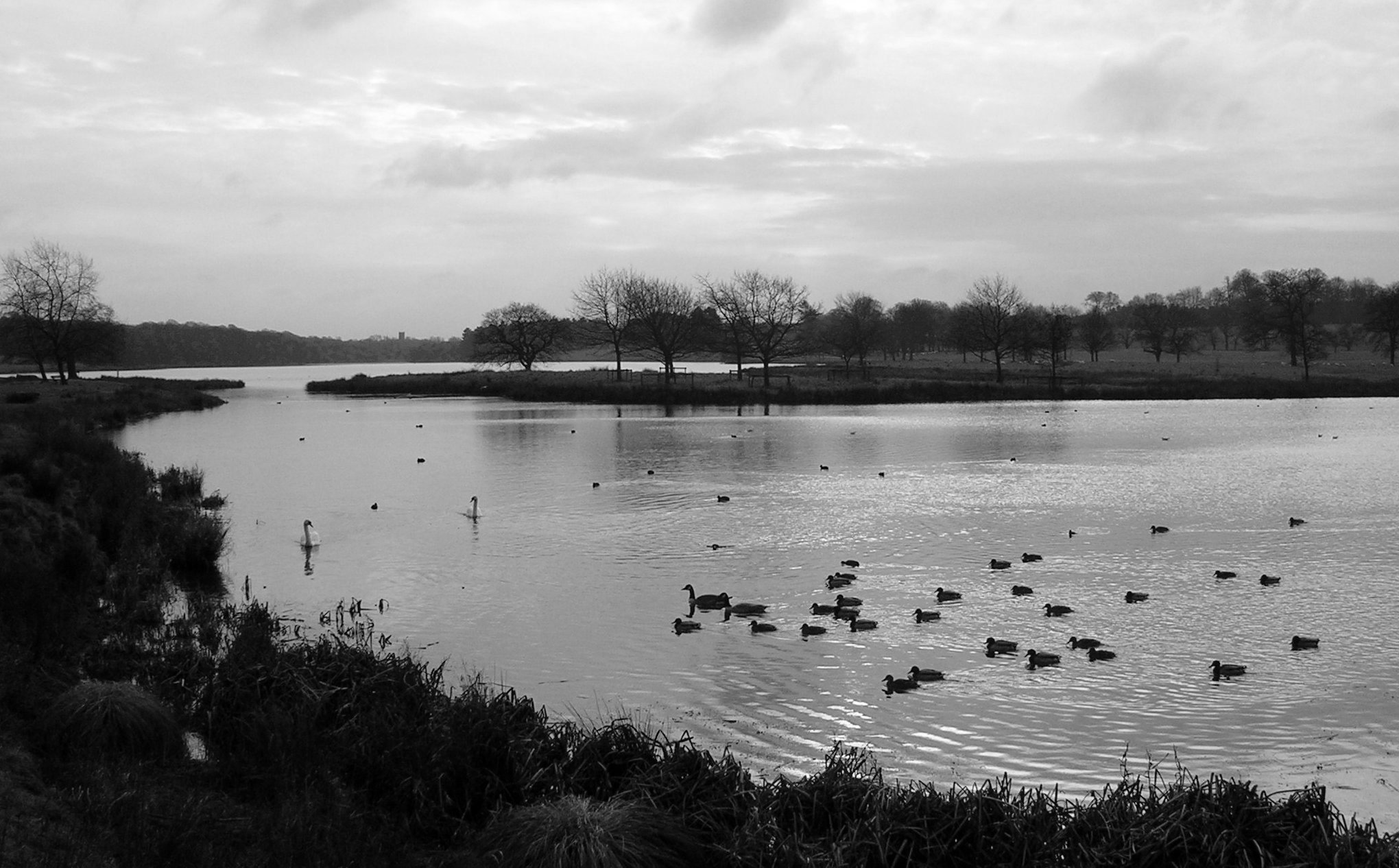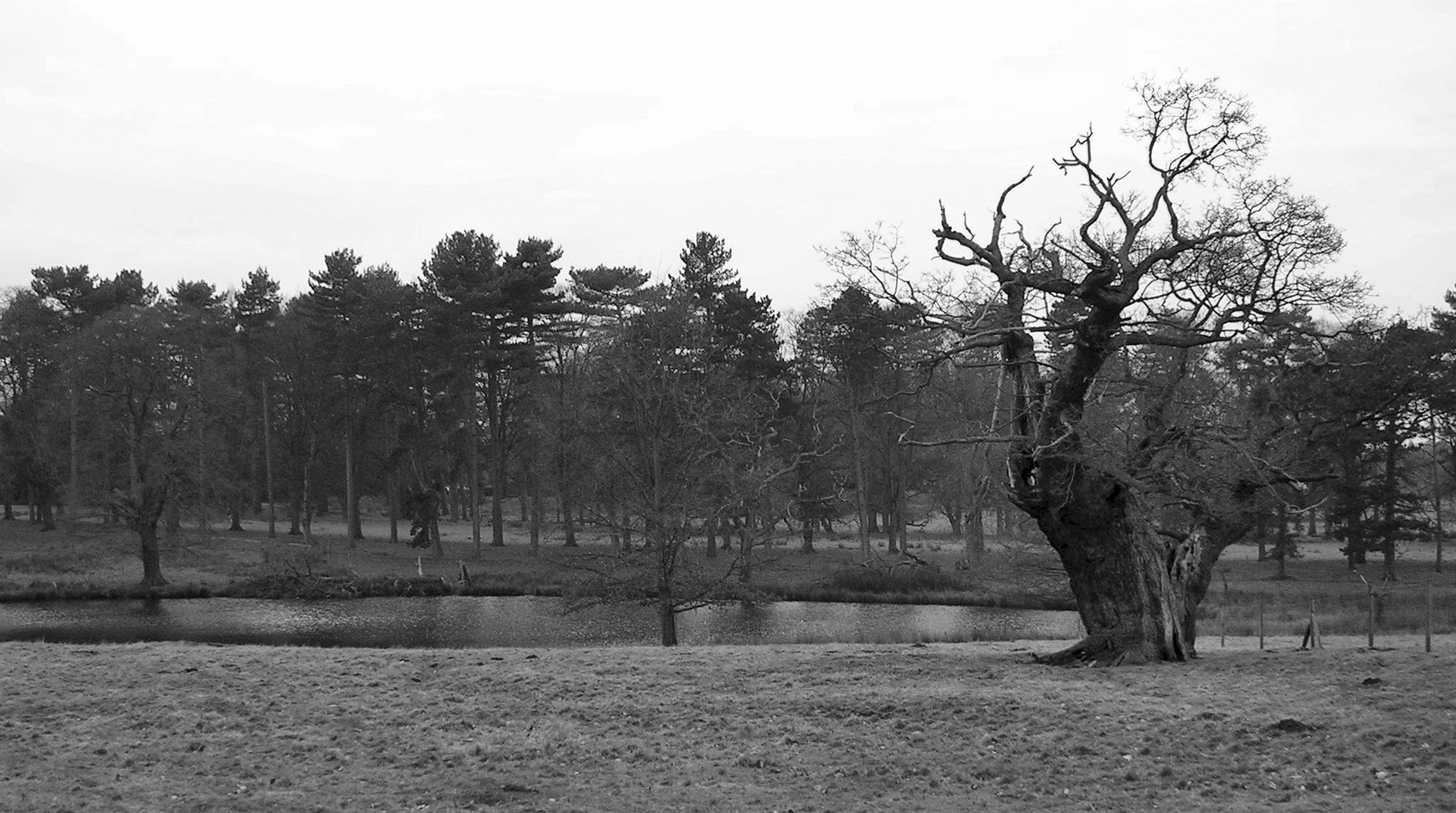Twitched at Tatton
The cold levels have dropped, my good lasses aren't keen on hanging about in some Godforsaken place trying to compile a list of birds and micro fungi - the decision was reached to stay local and head to the ever reliable confines of Tatton Park. News was had that a Smew (Mergellus albellus) had taken up residence so off me and my missus set (the little one wisely stayed home and did her homework whilst the fire blazed away) and hoped we could hit the target species and a few other good things too.
The snow had been falling, the frost had remained stubborn so even trying to roll a few logs was darn difficult and utterly disappointing. Any fungal fruiting had been frozen solid or completely wiped out by what were testing and destructive temperatures for growths so delicate. As we checked around a superb Beech (Fagus sylvatica) tree that has bore no end of fungal species over the years a Treecreeper (Certhia familiaris) ascended the rough bark of a nearby Oak (Quercus sp) and seemed to have no intention of hanging around and giving us a good view. The said Beech was almost bare with only some sorry looking Smokey Bracket (Bjerkandera adusta), some tired out Hairy Stereum (Stereum hirsutum) and the odd defiant Artists Bracket (Ganoderma australe) worth attention.
Reaching the main Mere it was a surprise to see over 60% of it frozen solid with the odd thawed bits occupied by several species of wildfowl and a couple of Gulls, namely Common (Larus canus) and Black Headed (Chroicocephalus ridibundus). The Common Gull is perhaps my favourite Gull as everything about it seems...just right. This time of year sees them at their finest with that clean grey back, the greenish-yellow of the legs and bill, the delicate head with its white feather foundation carefully smudged over with pencil lead grey and the finish black eye, filled with what seems a sharp yet caring nature. I may romanticise but I never tire of admiring these beauties.

It were a cold day today - the grey theme hopefully heightens the sensation
The other birds present were active Coot (Fulica atra), a pair of snoozing Pochard (Aythya ferina), Tufted Duck (Aythya fuligula), Mallard (Anas platyrynchos) and some distant Great Crested Grebes (Podiceps cristatus). A Cormorant was noted in nearby branches looking rather fed up with having so few diving opportunities and the stunning white head of this bird had me wondering which sub-species we had on our hands. Was it the common Phalacrocorax carbo carbo or indeed the less frequent Phalacrocorax carbo sinensis. Apparently though the plumage colour is of no significance anymore and to separate these two birds one needs to look a lot closer, in fact a whole lot closer - so much so that various on-line investigations have to be made to clarify the finer details - I am now more unsure than ever!
Marching on and keeping the wintry nip at bay the bins were raised and dropped at various points with little in the way of dawdling going on. Goldeneye (Bucephala cangula) were present in several pairs, a small flotilla of Gadwall (Anas strepera) kept their distance and a couple of perished looking Little Grebe (Tachybaptus ruficollis) swam around like mad in the hope, it seemed, of raising a little internal heat.
Reaching the far end of the Mere the water was unfrozen and a small congregation had gathered to pay homage to the liquid that still flowed. A quick shuftie and there, between several towering Canadian Geese (Branta canadensis), was the sought after Smew (Mergellus albellus), a Red Head indeed, with two tone greyed body plumage, white wing patches and cheeks and lovely warm chestnut red noggin. The bill is small and delicate but has the hooked tip and serrated edges typical of the sawbill family. This is a delightful bird and although it is the cracked ice male everyone flocks to see I think the female is a stunner in her own right and deserves all the attention she gets. Looking at this bird it does come as a surprise that they may actually be more closely related to Goldeneye than the Mergansers.
Whilst viewing this bird we noted through our binoculars a trio of waving twitchers whom we presumed were waving to us to inform us not to get to close. When the bird flew we decided to go round and have a chat, and offer our apologies for a flushing faux pas. Imagine our surprise when the three became two and they were a couple of bods we bump into on our travels here, there and everywhere. John whom we know as 'The Liverpool Man' is a face we have met several times over the last 15 years with no sighting having been had since 2008 when a Short Toed Lark (Calandrella brachydactyla) and Wooodchat Shrike (Lanius senator) were being paid a visit on the grand outcrop known as The Great Orme in North Wales. His fellow birdwatcher for the day Pat was someone whom we only meet locally but last met up with us on a visit to the River Dee in search of that fantastic Odonata species, the Club Tailed Dragonfly (Gomphus vulgatissimus). It was great to catch up with these two cheery folk and details were exchanged on our recent adventures and the outstanding species caught up with.
Chatting over, farewells were had and we two freezing wanderers went and indulged in what many would call a crank pastime. Stick hunting is the game and with a quest to seek out the most miniscule of fungi which, when all environmental factors are keen to combine and play ball, will produce some really interesting finds. And just to prove this game is no waste of time...well er...we found absolutely nothing. Everything seemed set to produce a bumper haul of fruit but alas no - it was not to be and after checking numerous branches and twigs we gave up and decided to warm up the old system and dash swiftly back to the warmer confines of the car. Less than 100 steps later it was time to pause again as a large feeding finch flock was seen beneath the splendid avenue of Beech trees which gave immediate thoughts of Chaffinch and perhaps, Brambling. Bins raised to peepers and there - a very large flock of both species with the Brambling (Fringilla montifringilla) taking most attention as this bird is really an uncommon chap and something you certainly don't see on a daily basis. The combination of greys, blacks, whites and tangerine make this a unique little species that appear in this country from September right up until early May. Some years they are more abundant than others with some of the dependency being on whether or not the Beech have produced enough masts (or nuts if you prefer). Either way tripping across a lone bird or a flock such as today the joy is always plentiful and a good old gander is taken.
Despite my wife’s pleas to 'get a bloody move on' (she does feel the cold a bit more than me - aaah these delicate lasses) I did manage to persuade her to just have a quick shuftie at what we have christened 'The Tatton Beech'. This superb tree is now on its side due to a tremendous winter storm whereupon a few of these magnificent monoliths (if at all weakened in anyway) will undoubtedly tumble and pay the highest price of all. The bonus comes though in the fact that the rangers of Tatton tend to leave these fallen trunks where they are and for the invertebrate and fungal communities a whole sustaining environment is created. And so, as a result of finding a fresh new wind blown victim we have decided to monitor this beast over the coming years and make a list of all fungal growth found on or around the rotting wood. A nearby tree we found after several years of external corruption created a list well into the twenties and the task is on to top this and so paint a portrait of what helps break down such a tough substance as wood. To begin with the detective within searched the rooting areas where the tree seemed to be most weakened. No sooner checked than the culprit of the disaster was located - that insidious fungal specimen Giant Polypore (Meripilus giganteus) was seen to be erupting from the grassy soil around the base of the tree and although in a blackened state this parasitic growth was surely the culpable suspect. It seems that this is not the only tree under attack with several more gatherings of blackened fruitbodies being seen around the base of other hefty monoliths. It looks as though the fungal community are in for a treat - watch this space!

Even in winter Tatton has a picturesque quality and the wildlife is there to be seen if one puts a little work in
Back to the car and a well earned cup of coffee was downed in no time and the heater was switched on to try and take away the tingle from the toes (and other extremities). A crisp and regular walk again and Tatton once more offering plenty for the keen of eye to observe. The summer months will soon be upon us (well that's the idea) and I am sure we will be back at this fine National Trust area very soon.